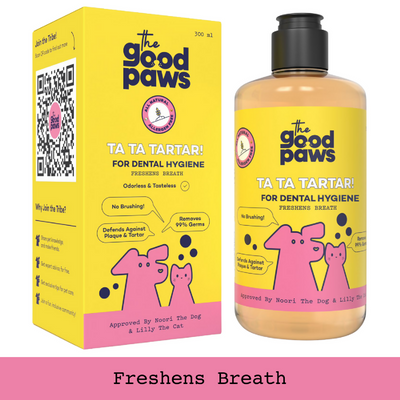Caring for a dog is an essential act of responsible ownership. It contributes to its physical health and maintains a strong bond between you and your canine companion. There is a sense of satisfaction in taking on the responsibility of grooming your dog. In this article, we'll go over DIY dog grooming in detail, covering everything from bathing techniques to nail trimming.
Dog Grooming Basics
Understanding Doggy Style Dog Grooming
Doggy-style dog grooming isn't just a play on words; it's about approaching grooming with the right mindset. It's important to understand your dog's breed, coat type, and individual needs. Different breeds have varying grooming requirements, and tailoring your approach based on your dog's specific characteristics is the key to a successful grooming routine. Researching your dog's breed characteristics can provide valuable insights into the type of grooming tools you'll need and the frequency of grooming sessions. Some dogs may require daily brushing to prevent matting, while others might need regular nail trims to maintain paw health.
Dog Grooming at Home: Where to Start

Bathing Basics
Start the grooming process with a thorough bath. Use lukewarm water and a dog-friendly shampoo to avoid skin irritation. Ensure that you flush exhaustively to release all traces of soap. Some dogs may not enjoy bath time, so use optimistic support and treats to create a positive association.
Brushing Techniques
Brushing is essential for keeping a fit skin and decreasing shedding. Additional brushes serve different purposes – slicker brushes are ideal for removing tangles, while bristle brushes work well for smoothing and distributing natural oils. Brush gently, especially in sensitive areas, and be patient to avoid causing aches to your dog.
Comb for Dogs: Untangling the Knots
A comb is indispensable for dogs, particularly those with long or curly hair, to prevent matting. Regularly comb through your dog's coat, paying attention to areas prone to tangling, such as behind the ears and under the legs. This not only keeps your dog's fur in good condition but also serves as a bonding activity.
Dog Bathing Brush: A Two-in-One Solution
A dog bathing brush can be a game-changer in your grooming routine. These brushes are designed to be used during baths, helping to lather the shampoo and distribute it evenly. The bristles also provide a gentle massage, promoting a relaxing experience for your pup.
Nail Trimming: The Paws-itive Approach?
Nail trimming can be intimidating for both dogs and their owners. However, keeping your dog's nails at an appropriate length is important for their reassurance and fitness. Use specialised nail clippers designed for dogs and proceed with caution. If unsure, consult with your veterinarian or a professional groomer for guidance.
Ear Cleaning: A Sound Practice
Dogs, particularly those with floppy ears, are prone to ear infections. Regular ear cleaning helps prevent wax buildup and reduces the risk of infections. Use a dog-friendly ear cleaning solution and a gentle touch. If you notice any unusual odour, discharge, or redness, consult your veterinarian promptly.
DIY Dog Bathing Tips

Choosing the Right Dog Bathing Brush
Selecting the right bathing brush is crucial for a successful grooming session. Different coat types require different brushes, and using the incorrect one can guide to discomfort or ineffective grooming. For short-haired breeds, a rubber brush or a grooming glove can help release loose hair and stimulate the skin. Long-haired breeds, on the other hand, may benefit from slicker brushes or undercoat rakes to prevent matting. When bathing your dog, thoroughly wet their coat and apply a dog-friendly shampoo. Use the chosen brush to lather the shampoo and massage it into the fur. Be gentle, especially around sensitive areas like the face and ears. Rinse your dog positively to remove all vestiges of shampoo.
Combing Through the Basics
The Importance of Using a Comb for Dogs
Combing is a crucial step in the grooming process, especially for dogs with longer or thicker coats. A comb helps detangle hair, prevents matting, and ensures that the coat is free of debris. When choosing a comb for dogs, opt for one with wide and narrow teeth to handle different parts of the coat.
Regular combing maintains your dog's coat health and allows you to check for abnormalities, such as lumps, bumps, or skin irritations. It's also an excellent opportunity for bonding, as many dogs find the gentle sensation of combing relaxing.
Nail Trimming
Mastering the Art of Nail Trimming
Nail trimming can be a daunting duty for both dogs and their owners. However, keeping your dog's nails at an appropriate length is crucial for their well-being. Long nails can cause discomfort, affect your dog's gait, and even lead to joint problems.
Invest in high-quality nail clippers designed for dogs, and familiarise yourself with the anatomy of a dog's nail. Trim small sections at a time, avoiding the quick—the sensitive area containing blood vessels and nerves. If you're unsure, seek guidance from your veterinarian or a professional groomer.
Conclusion
Embarking on the journey of DIY dog grooming is a rewarding endeavour that strengthens the bond between you and your canine companion. By understanding the basics, choosing the right tools, and incorporating expert insights, you can provide your dog with a grooming routine that promotes their physical health and well-being. Remember to approach each grooming session with patience, positivity, and a doggy-style mindset, ensuring a positive experience for both you and your furry friend.





![Common Behavioral Problems in [Pet Type] and How to Solve Them](http://www.petkonnect.in/cdn/shop/articles/Common_Behavioral_Problems_in_Dogs_and_How_to_Solve_Them.png?v=1715167147&width=400)

